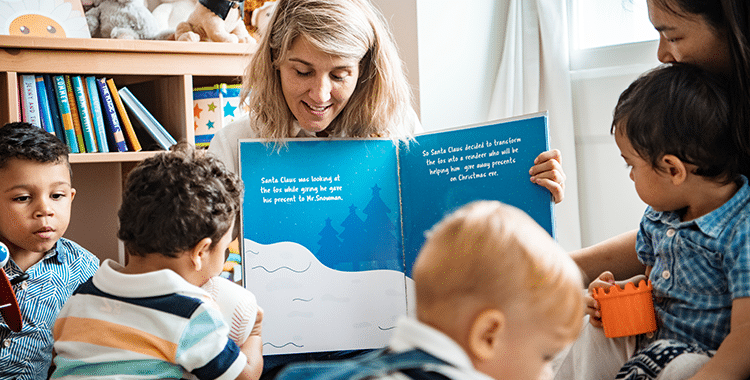Superhero play is more than just power play; it helps children confront and manage their deepest fears.
Superheroes come in many guises, ranging from classic figures like Spiderman and Superman to the super-powered personas depicted in children’s TV shows, such as Tree Fu Tom or Luna Girl from PJ Masks.
Children are attracted to the power and strength these characters embody and relish the opportunity to assume fantasy roles and enact narratives centred around the struggle between good and evil.
While some practitioners find the physical aspect of this form of play unsettling, fearing those rough and tumble activities or pretend weapon use could lead to actual violence, it is crucial to understand and support it rather than obstruct it.
Express yourself
Superhero play is standard among four-year-olds, who seek greater autonomy and are keen to explore activities that evoke fear and excitement.
When a child dons a magical cape and flies across the land fighting off the evil monsters who have stolen all the toys, they understand what it feels like to be courageous, noble and in control. This gives them a sense of empowerment, boosting their self-confidence and helping them to face real-life fears more confidently.
In this fantasy land, the superhero bravely faces the baddie and triumphs over evil.
When children engage in role-play as either the hero or the villain, they encounter a range of emotions. For example, they may feel vulnerable when the villain casts spells on them or carries out evil deeds.
Eric Hoffman (2004) says that children often gravitate towards superhero play to explore and express their emotions. While fantasy monsters are usually the ‘symbols’ used to represent children’s fear, worry, and anger, magic wands, weapons, and superpowers are the ‘symbolic tools’ that children use to take control of those emotions and feel ‘safe, powerful and alive’.
Exploring ‘the big stuff’
Superhero play not only delves into themes of good versus evil but also serves as a gateway for exploring concepts such as life, death, and morality. While children may strive to identify with the ‘good’ characters, they may also struggle with controlling their ‘bad’ impulses.
Superhero narratives often involve epic battles where characters face larger-than-life mortal dangers. In these scenarios, children can symbolically confront and make sense of concepts related to life and death. For children experiencing real-life loss or grief, superhero play can serve as a coping mechanism to help them overcome their fears.
The benefits
Following the aftermath of COVID-19, many children, particularly disadvantaged children, enter Reception with speech, language, and communication levels that require targeted support.
The Early Years Foundation Stage (EYFS) emphasises enhancing children’s early language development and literacy. In some early years, educators struggle with integrating popular culture or weapon play into the educational framework. However, one of the advantages of superhero play is that children can relate to it. It captures their interest, which, in turn, prompts them to talk.
However, while superhero play is now widely accepted, it was not uncommon for settings to adopt a zero-tolerance approach to it in the past.
Concerns regarding health and safety, the potential for accidents stemming from ‘boisterous’ play, escalating noise levels, and the play dominating the environment were cited as the primary reasons for restricting the play.
However, research has proven that there is no evidence that superhero or weapon play leads to aggressive play.
Here are some of the benefits of superhero play:
Children who act out stories are likelier to want to write them down. Complex plots involving ‘save-the-day’ scenarios boost vocabulary and language skills.
- Children engage in teamwork, problem-solving and negotiation as they sequence stories and devise solutions to challenges encountered along the way.
- Physical development: Superheroes run, jump, capture, twirl, and pounce. Children, for example, gain insights into their bodies’ spatial awareness and learn the distance they need to be from objects or people when performing non-contact karate kicks.
- Sense of belonging: regardless of a child’s cultural background, language or social skill, they can all join in with running and chasing games that involve characters they may have seen on TV
A successful approach to superhero play at an early year’s setting involves boundary-setting and consistency. Fighting, in some form or another, often accompanies the play. Still, if practitioners are attuned to the moral principles of the superheroes in question, they can intervene sensitively and with logic. For example, Batman, Spiderman and Superman do not ever kill anyone.
Superheroes use their powers wisely. They do not intimidate or physically harm others. This can be discussed with children and incorporated into a whole setting policy.
In the words of Spiderman’s uncle, ‘With great power comes great responsibility.’

Nicole
Content Creator



